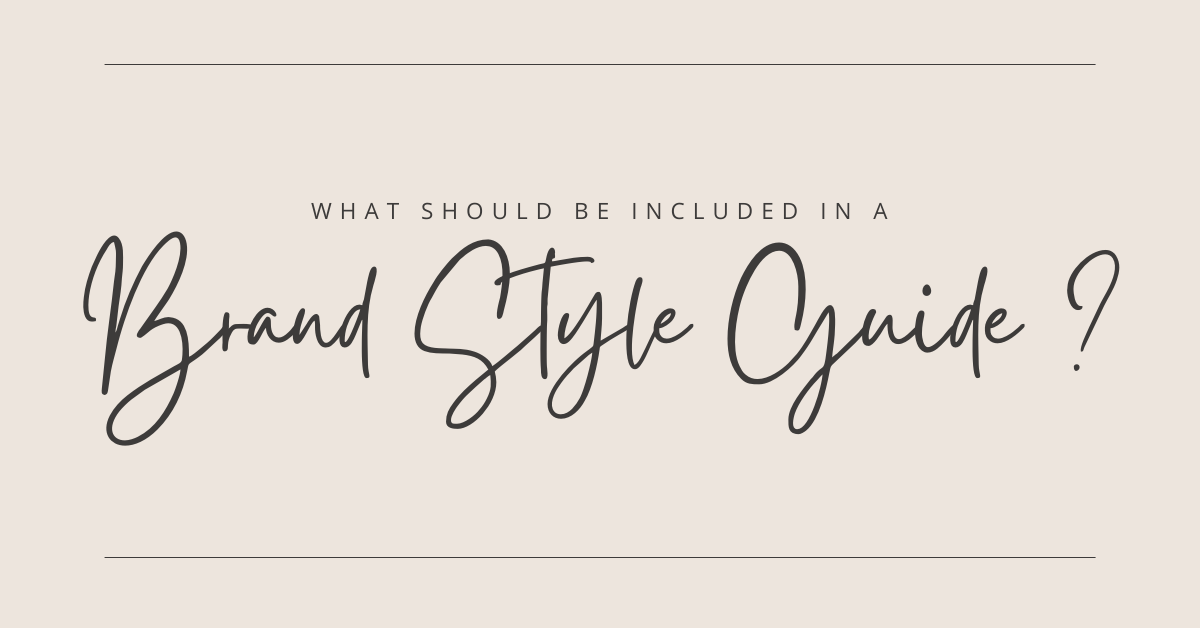A brand style guide is a document that contains the standards for the design and communication of a brand. It can include elements such as the brand’s logo, colors, typography, and other visual and verbal elements. The guide can be used internally by employees and agencies to ensure that all communications are consistent with the brand. It can also be shared with external partners, such as suppliers, to ensure that they understand the brand’s standards. Let’s understand what to include in a brand style guide~
Brand Name
A brand name is the first and most basic element of a brand. It is the foundation upon which all other brand elements are built. A brand name should be included in a brand style guide so that it can be used consistently and correctly across all touchpoints. A brand name is the first thing that customers will see and it will be their first impression of the brand. A brand name should therefore be carefully chosen to reflect the values and personality of the brand. It should be easy to remember and pronounce, and should be distinctive enough to stand out from the competition. Including the brand name in the style guide will help to ensure that it is used consistently across all touchpoints, from the website and social media to advertising and marketing materials. Using the brand name consistently will create a strong and recognizable brand that customers will remember and trust.
Tagline
A tagline is a very important part of your brand. It is a short, memorable phrase that sums up what your brand is all about. Your tagline should be included in your brand style guide because it is an essential part of your brand identity. It should be used on all of your marketing materials, including your website, business cards, and brochures. A well-crafted tagline can help you attract new customers and differentiate yourself from your competitors.
Logo
A logo is a key part of any brand style guide because it is the most visible and recognizable element of a company’s brand. A well-designed logo can help a company to build brand equity, which is the value of a brand that is based on customer perceptions and associations. A company’s logo should be included in its brand style guide in order to ensure that it is used consistently and effectively across all touchpoints.
Color Palette
When crafting a brand style guide, it is important to consider the color palette. After all, color is one of the most important elements in branding and can be used to communicate a brand’s personality, values, and message. A color palette can help to ensure that a brand’s visual identity is consistent across all touchpoints. It can also be used to create a unique and recognizable look that will help a brand to stand out from the competition. When selecting a color palette, it is important to consider the different meanings and associations that colors can have. For example, blue is often seen as being trustworthy and reliable, while green is often associated with nature and growth. It is also important to consider how different colors will work together. A good color palette will include a mix of colors that complement each other and create a sense of harmony. A color palette is an important tool that can be used to create a strong and cohesive brand identity. When selecting a color palette, it is important to consider the different meanings and associations that colors can have, as well as how different colors will work together.
Typography
A typography is the art and technique of arranging type to make written language legible, readable, and appealing when displayed. The arrangement of type involves selecting typefaces, point size, line length, line-spacing, and letter-spacing, and adjusting the space within letters pairs. Different typefaces can be used to convey different meanings and emotions. The use of a typography can also add a visual element to a brand that can help it to stand out. A typography should be included in a brand style guide to ensure that the brand’s visual identity is consistent across all communications.
Imagery
Imagery is one of the most important aspects of any brand identity. A strong and consistent visual identity helps customers to quickly and easily identify a company and its products or services, and creates a lasting impression. A company’s visual identity should be reflected in its logo, branding, website, marketing materials and any other communications. Consistent use of high-quality imagery will make a company’s visual identity more recognizable and memorable. Imagery can also be used to convey key messages about a company’s brand. For example, using images of people in a brand’s marketing materials can help to humanize the brand and make it more relatable. Including imagery in a brand style guide helps to ensure that all communications are visually cohesive and on-brand. It can also be a helpful resource for designers and other creative professionals who are working on behalf of the company.
Conclusion
A brand style guide should include a clear and concise description of the brand, the company’s mission and values, the target audience, and the overall tone and feel of the brand. It should also include a visual guide with examples of the company’s logo, colors, fonts, and other design elements. Stay tuned for more blog inspiration~

